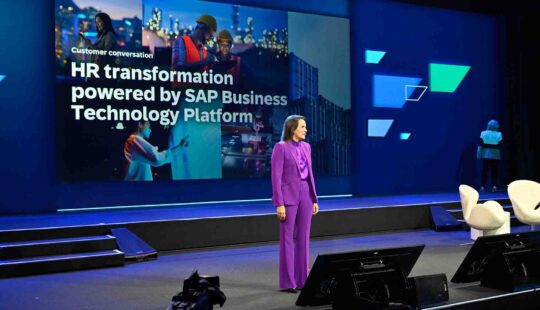A recent Wall Street Journal headline framed an impending workplace transition with some caution. It read, “If You Thought Working from Home Was Messy, Here Comes Hybrid Work.” I recently addressed this theme and how companies can position themselves to manage ongoing workplace shifts in my SAPPHIRE NOW session, “HR 101: Simplify Your HR Transformation to the Cloud”.
By maximizing the potential of cloud HR solutions, I explained, hybrid work can still support an excellent, consistent employee experience. If HR has full visibility into the entire workforce – who’s doing what, from where, why, and even who’s vaccinated and ready to return to the office – and manages it appropriately, flexible and hybrid work aren’t just possible to orchestrate effectively, they’re also profitable.
Even functions like payroll, which has almost always been run with a team working together in an office, are now being run remotely – and the world is not going back. I recently wrote a detailed piece, “Payroll in Your Pajamas: Reimagining Payroll for a Workforce at Home,” that explained how organizations can be successful with a remote workforce. Specifically, when you’re looking for a new employee with a specific skill set, the possibilities open up significantly if you are able to support a remote worker. The organization can also save a considerable amount of money on traditional expenses such as relocation. Ultimately, this can be a competitive advantage – but you have to have the right structure in place.
You can’t run a business without your people, and you need to make sure you have the right tools for them.
In fact, companies that came out stronger as the COVID-19 pandemic continued were the ones that had invested in digital technology for their mission-critical processes – which include HR and payroll operations. And based on customer feedback, SAP SuccessFactors is focused on product enhancements in four key areas, specifically with the intent of helping companies thrive in a hybrid-work world.
1. Core HR
Companies must use HR cloud solutions to make everyday life easy for employees. That is, no one should have to make calls or send e-mails to configure their benefits or manage dependents. Similarly, the solution must automatically manage regulations and intricacies based on employees’ locations, such as country-specific collective bargaining agreements, and provide sentiment analysis in terms of people’s feelings about a safe return to work as well as their vaccination status. Cloud solutions must also make onboarding smoother and faster for both new hires and HR alike.
2. On-premise suite integration
Regardless of whether people work on-site, remotely, or in a hybrid arrangement, they need a single-system experience with a consistent, smooth, and easy user interface (UI) and user experience (UX) for inputting and managing their information. On the other side, HR must have fast, easy access to individual- or aggregate-level data for a complete view of the workforce, which is critical for providing a consistent, high-quality experience to everyone.
3. Time management
In a hybrid-work world, it’s important to have a clear understanding of how people spend their time. Cross-midnight, clock terminal integration, and flextime are all improving in functionality and ease of use in HR cloud solutions and will be critical for workforce insight and management – and maintaining productivity and efficiency – in the months and years ahead.
4. Payroll
Every organization should want to have streamlined payroll operations with the right tools and processes – especially ones that are accessible by employees, particularly on mobile. Ease of use is key to user adoption and the reduction of manual work.
Every company’s journey into and acceleration with the cloud is unique, as it should be since organizations come in infinite shapes and sizes.
Typically, companies make the leap in one of three ways: talent hybrid, which is moving talent management and analytics to the cloud; core hybrid, which moves personnel administration to the cloud and offers flexibility within the tools, as well as mobile access for employees, including time and attendance management; and full human experience management (HXM) suite, which involves moving HR and payroll processes to the cloud. Every company must start where it’s appropriate for them based upon factors such as complexity of existing systems or processes and organizational readiness for change management. Regardless, organizations must have an eye toward ensuring engagement, productivity, and resilience in the new normal that is the hybrid-work world.
What people want is to be part of a modern organization that gives them the tools that increase their productivity, give them confidence, and create engagement so they’re successful in their jobs. Cloud HR, deployed effectively, makes this possible for everyone – however and wherever they work.
To learn more, join the SAP Human Experience Management Movement or replay the SAPPHIRE NOW session.
Imran Sajid is senior director of Solution Marketing at SAP America.



